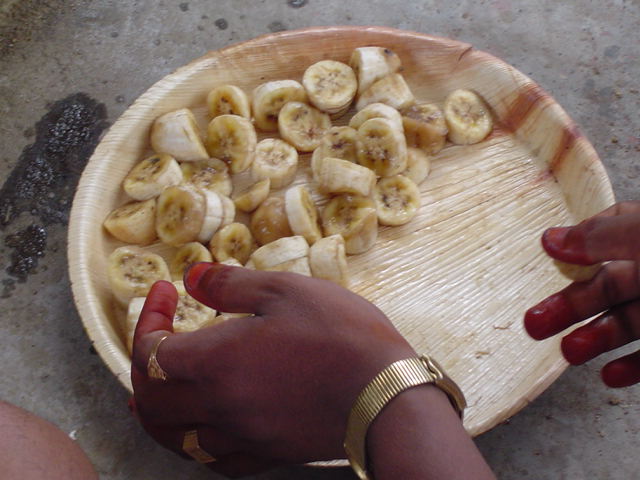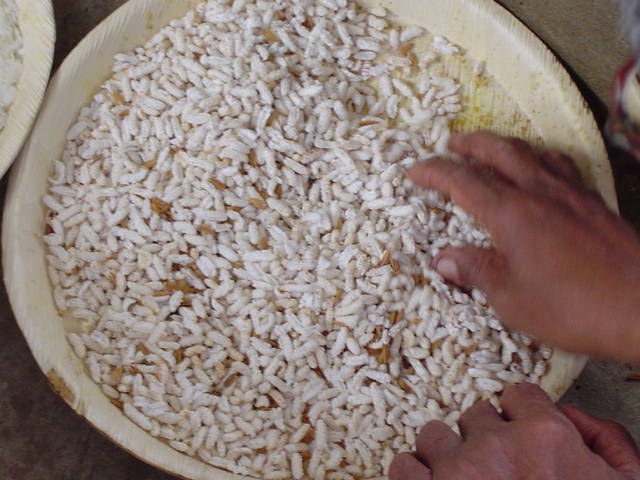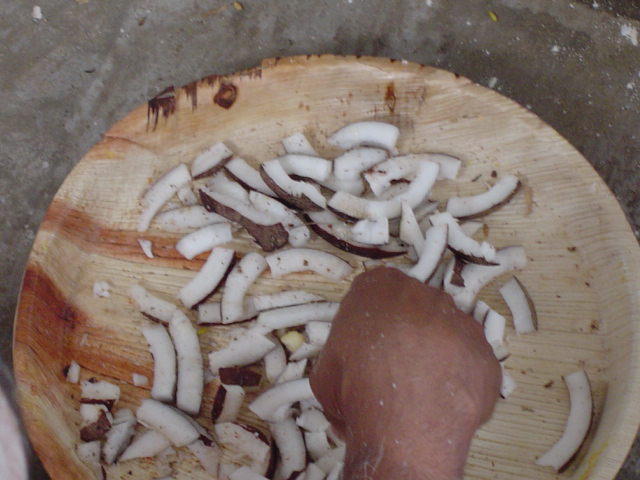
Navaratri Journal
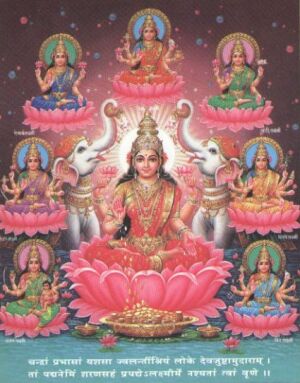
Navaratri Nine Day Yagya
Honoring the goddess in all Her forms
Kanchipuram, South India
October, 2004
This year Navaratri will be a grand event marked by Seetharam's arrival in India to supervise the puja.net activities on an ongoing basis. Our sponsorship levels are such that we are able to hire 25 priests for each of the 10 days of the celebration. As a special honor, we have hired a specialist in Chandi Homam; the fire yagya that will be performed each of the 9 days of the event.
Each day one group of specially trained priests will chant the entire 700 verse Chandi Path (also known as Devi Mahatmyam) and then perform a full Chandi homam (fire yagya). This is a task that requires about 5-6 hours to complete. At the same time, the other 17 priests will chant a variety of mantras and perform a variety of pujas for all the different forms of the goddesses
As a part of the traditional Navaratri celebration, we have arranged for the traditional Kanya Puja to be performed. This requires that traditional gifts of a silk sari, a comb, makeup, and a mirror be offered to young girls each day; 1 year old the first day, 2 years old the second, etc. for the 10 days of the yagya.
We have also hired someone to work as a full time cook for the entire event. It is an important part of the Vedic tradition that brahmin priests be well fed during the yagya performance, and we are providing all meals and snacks, tea, etc for the entire event. In addition free food will be provided to students, and anyone else who attends the event even if briefly.
For the participants, Seetharam and his father-in-law will be taking photos (a few of which have already been sent by email), recordings, and video so that they can be combined into a DVD to be distributed after the event.
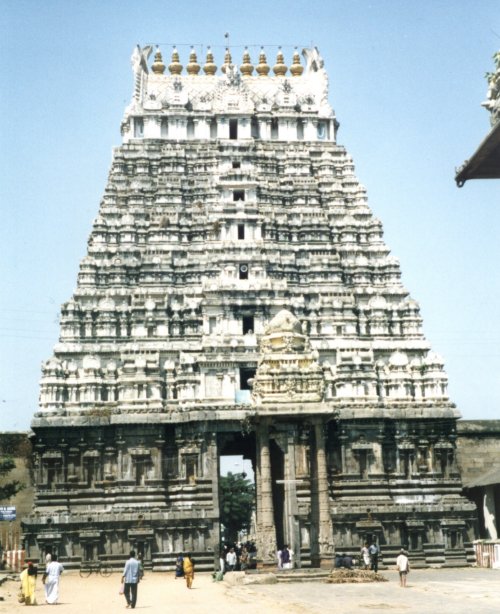

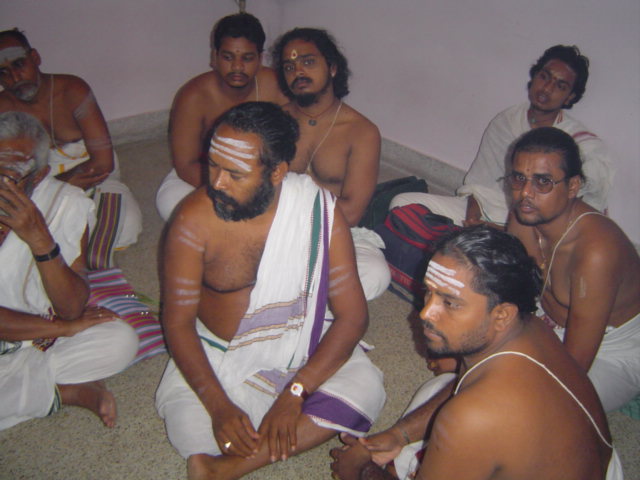
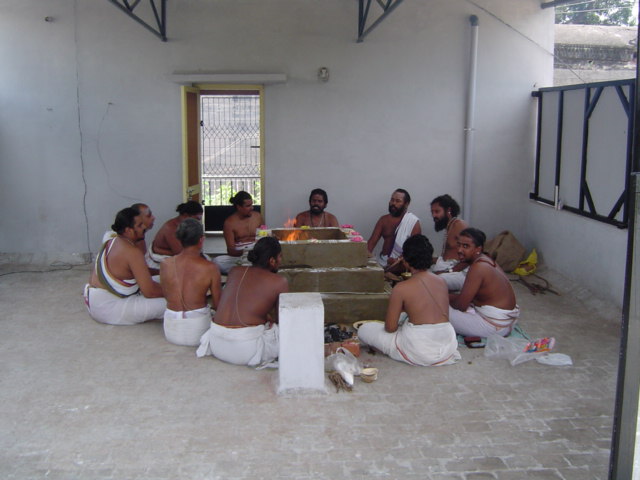
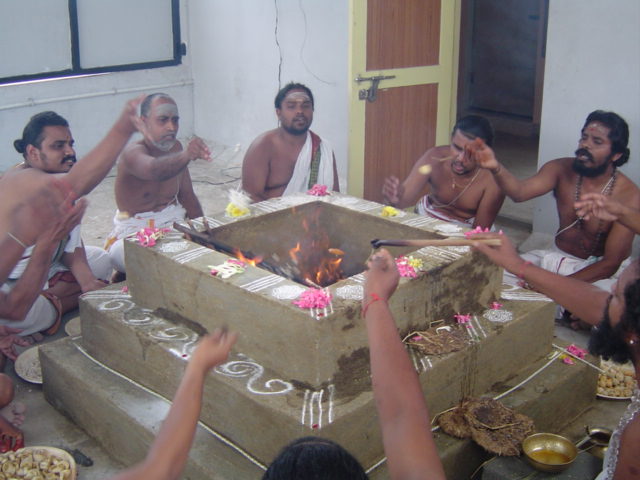
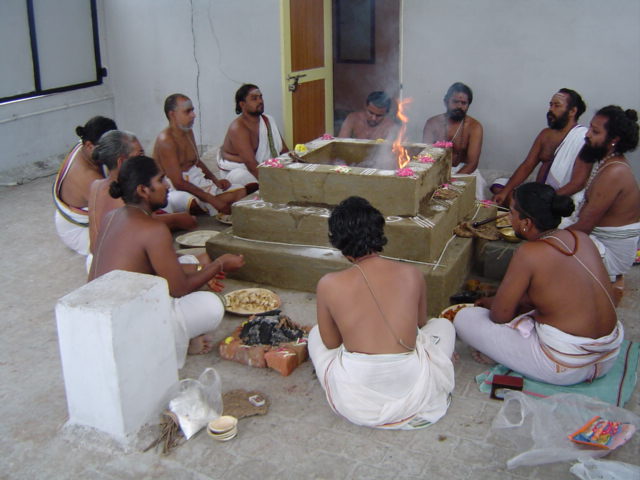
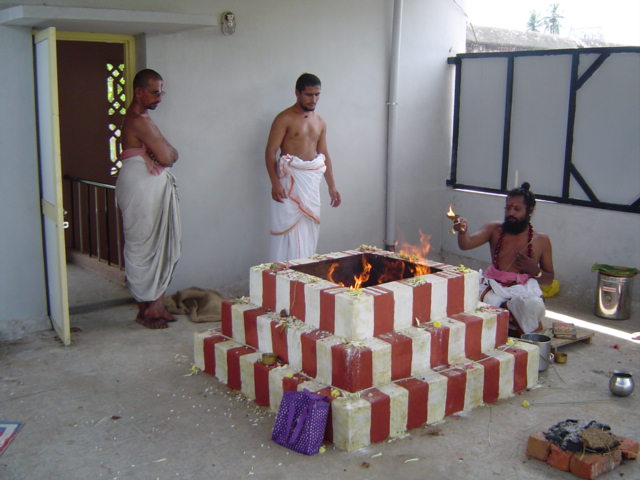
Here the Durga specialist is finishing the yagya by offering the light of camphor while chanting special mantras. This puja is called aarti (offering light).
Note that the homa kund was painted with red and white stripes as is traditional.
